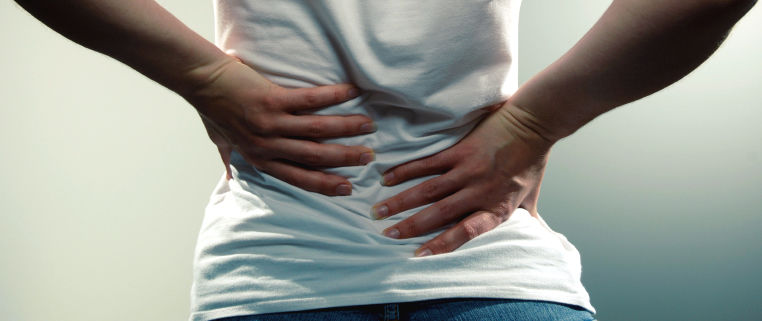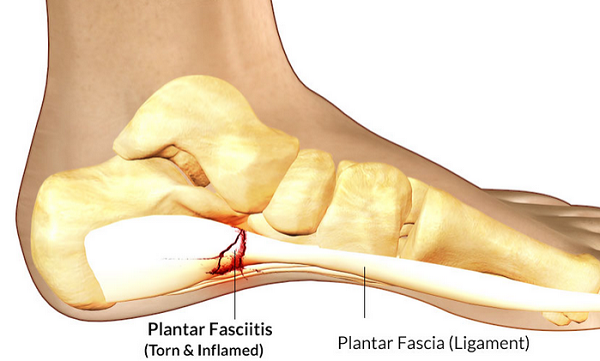Book in using this link: https://physio4richmond.connect.tm3app.com/
June Newsletter
Things to avoid when you have Back Pain

Things to Avoid When You Have Back Pain
Back pain is such a common experience that it is estimated up to 80% of adults will have at least one severe episode of back pain in their lifetime.
For many people, the pain quickly resolves and things go back to normal. However the first time this happens to you it can be scary, particularly as very severe pain can occur suddenly and without warning. Statistics, however, are on your side. Most of the time, acute low back pain resolves without consequence and doesn’t recur. If you happen to be in the middle of an episode, here are a few tips to help you get through.
1. Avoid heavy lifting
While this may seem obvious, there are a few people who will always try to push through the pain. The expression "no pain, no gain" is in many cases outdated and if your work requires heavy lifting, it is more than reasonable to take a few days off.
2. Avoid too much rest.
On the other hand, lying in bed all day is bad for you as well. If you have severe back pain, gentle movement under the advice of a physiotherapist is much better for you than complete rest.
3. Avoid long car or plane trips
If possible, now is the time to avoid long distance travel. If you absolutely must travel, speak to your physiotherapist about how to manage your pain during the trip.
4. Avoid listening to horror stories
There are always stories about pain that never went away, requiring surgery, which only made it worse. While worst case scenarios do happen, being fearful is a negative factor in a healthy recovery. That terrible story is probably not going to happen to you and hearing these stories is only going to impact your recovery negatively.
5. Avoid delaying treatment
While your pain may go away on its own, it is important to have a professional assess your condition to screen for any serious injuries and advise you on how to best manage your pain while you are getting better. They can also help you recover as quickly as possible.
6. Don’t expect a miracle cure
Back pain is complicated, and a single treatment that works for everyone does not exist. It is important to follow the directions of your therapist and work with them to set reasonable and realistic goals for your recovery.

Plantar Fasciitis
Plantar fasciitis is the most common cause of pain at the rear of the foot. The plantar fascia is a fibrous tissue that originates on the heel bone and inserts into the toes, helping to provide stability and support to the arches of the foot.
Plantar fasciitis is the breakdown of the tissues of the plantar fascia, usually in the area that attaches to the heel. The cells within the tissue become disarrayed, changing the direction of pull and weakening the tendon, which can eventually lead to micro-tearing of the fascia.
WHAT ARE THE SYMPTOMS?
Plantar Fasciitis is characterised by gradual onset of pain at the base of the heel. The pain may be worse in the morning and eases throughout the day. Aggravating activities include standing, being inactive; stretching the foot, and the area will be painful to touch. In the early stages, activities such as running or dancing may ease the pain and only be painful afterwards, however as the condition develops further, pain may also be felt during exercise.
HOW DOES IT HAPPEN?
This condition usually develops slowly over time. Sudden heel pain following a traumatic incident is not usually classified as plantar fasciitis. Poor foot biomechanics, such as over pronation or supination (a kind of twisting movement within the foot) during walking or running places stress through the tendon. If this continues over time, the tendon begins to break down, causing pain.
Common activities that contribute to plantar fasciitis include walking with inappropriate or unsupportive footwear, running, and dancing. Other factors that may contribute to plantar fasciitis are lower limb muscle tightness, leg length discrepancy or muscle imbalance.
HOW CAN PHYSIO HELP?
There are various strategies your physio can use to assist with pain relief of the foot. Following a thorough examination of the lower limbs, your physio will decide if you require specific muscle stretching or strengthening. Often there will be a biomechanical abnormality in the gluteal or calf muscles that require attention. Once an exercise programis underway, strapping or orthotics, may be used to support the painful tissue. Generally, a stretching routine for the bottom of the foot will be prescribed, and tissue release using a golf or tennis ball may be added to the exercise regime.
Most practitioners agree that physiotherapy management and relative rest are best for plantar fasciitis, however, some people may need further treatment such as corticosteroid injections or surgery if physiotherapy is not effective in relieving the symptoms.
None of the information in this newsletter is a replacement for proper medical advice. Always see a medical professional for advice on your individual injury.
PhysioTip - Age doesn’t need to be a barrier to exercise. Don’t make age an excuse for inactivity. A recent study showed that exercise could reduce the risk of up to 13 types of cancers, including lung and breast cancers. Read more at www.physiospot.com

Peppermint Hot Chocolate
Ingredients
4 tsp raw cocoa powder
3 tsp honey
2 peppermint tea bags
2 cups milk or substitute (soy/almond milk)
Sprinkle of nutmeg and cinnamon
Optional: Marshmallows
Serves 2.
- Slowly heat milk over medium heat. Do not bring to boil as this will burn the milk and change the taste. Add peppermint teabags to the pan while heating and stir regularly.
- Add cocoa powder and honey. When milk is ready to drink remove from heat.
- Froth the heated milk either by using a whisk, mixer or plunger.
- Pour the hot chocolate into mugs, sprinkle nutmeg and cinnamon on top and enjoy.
Brain Teasers
Can you solve these word puzzles?
CYCLE
CYCLE
CYCLE
DICE
DICE
ECNALG
What has four teeth, a tail but no arms or legs?
